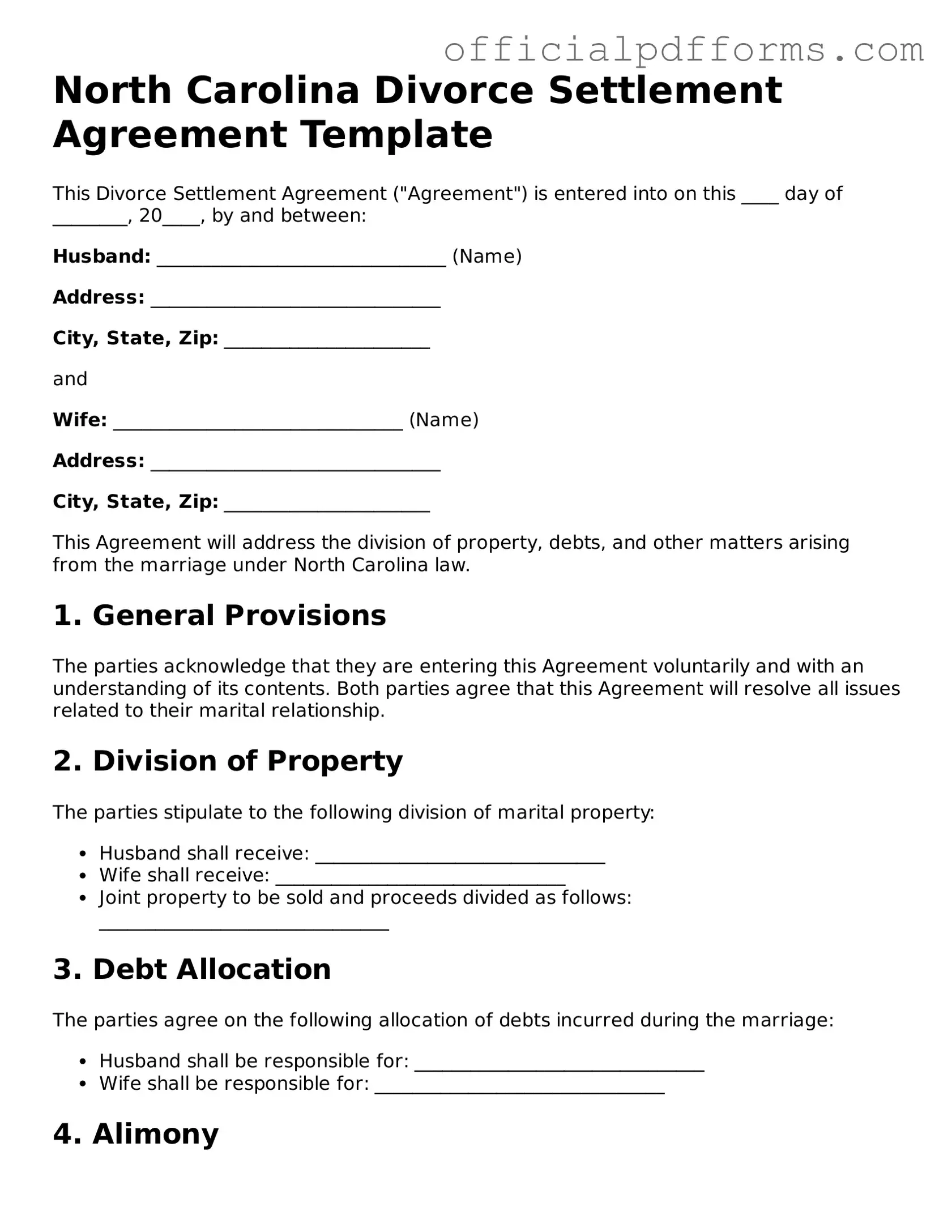What is a Divorce Settlement Agreement in North Carolina?
A Divorce Settlement Agreement is a legal document that outlines the terms of a divorce between two parties. It addresses key issues such as property division, child custody, child support, and alimony. This agreement is essential for ensuring that both parties are on the same page and helps to avoid future disputes.
Do I need a lawyer to complete a Divorce Settlement Agreement?
While it is not legally required to have a lawyer, it is highly recommended. A lawyer can provide guidance and ensure that your rights are protected. They can also help you understand the implications of the terms you are agreeing to. If you choose to proceed without legal assistance, make sure you fully understand the document and its consequences.
To fill out the Divorce Settlement Agreement form, follow these steps:
-
Gather all necessary information, including financial documents and details about children, if applicable.
-
Clearly outline how you plan to divide assets and debts.
-
Specify child custody arrangements, visitation schedules, and child support amounts.
-
Include any agreements regarding alimony.
-
Review the document carefully to ensure accuracy and completeness.
What happens if my spouse and I cannot agree on the terms?
If you and your spouse cannot reach an agreement, you may need to consider mediation or arbitration. These processes involve a neutral third party who can help facilitate discussions and find common ground. If mediation fails, the case may go to court, where a judge will make decisions on your behalf.
Can I modify the Divorce Settlement Agreement after it is signed?
Yes, modifications can be made to a Divorce Settlement Agreement, but both parties must agree to the changes. It's advisable to document any modifications in writing and have both parties sign the updated agreement. In some cases, you may need to seek court approval for significant changes, especially regarding child custody or support.
How long does it take to finalize a Divorce Settlement Agreement?
The time it takes to finalize a Divorce Settlement Agreement varies. If both parties agree on the terms, it can be completed relatively quickly, often within a few weeks. However, if disputes arise, the process can take months or even longer. Factors such as court schedules and the complexity of the case can also affect the timeline.
What should I do after signing the Divorce Settlement Agreement?
After signing the Divorce Settlement Agreement, file it with the court as part of your divorce proceedings. This step is crucial for making the agreement legally binding. Keep a copy for your records. Additionally, ensure that any agreed-upon actions, such as transferring property or changing custody arrangements, are completed as outlined in the agreement.
Is the Divorce Settlement Agreement enforceable?
Yes, once the Divorce Settlement Agreement is approved by the court, it becomes legally enforceable. If either party fails to comply with the terms, the other party can seek legal recourse. This may include filing a motion with the court to enforce the agreement or seeking modifications if necessary.
